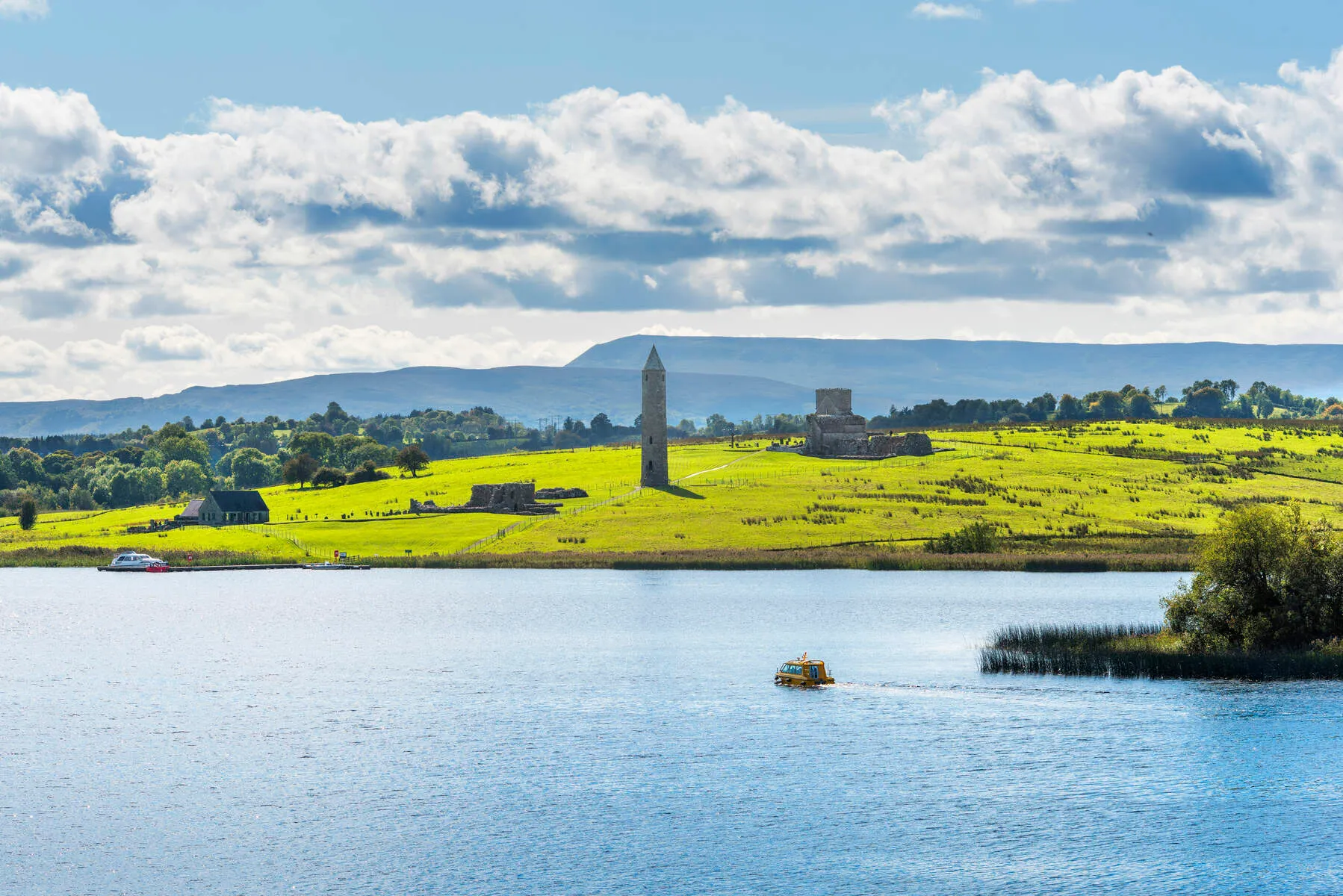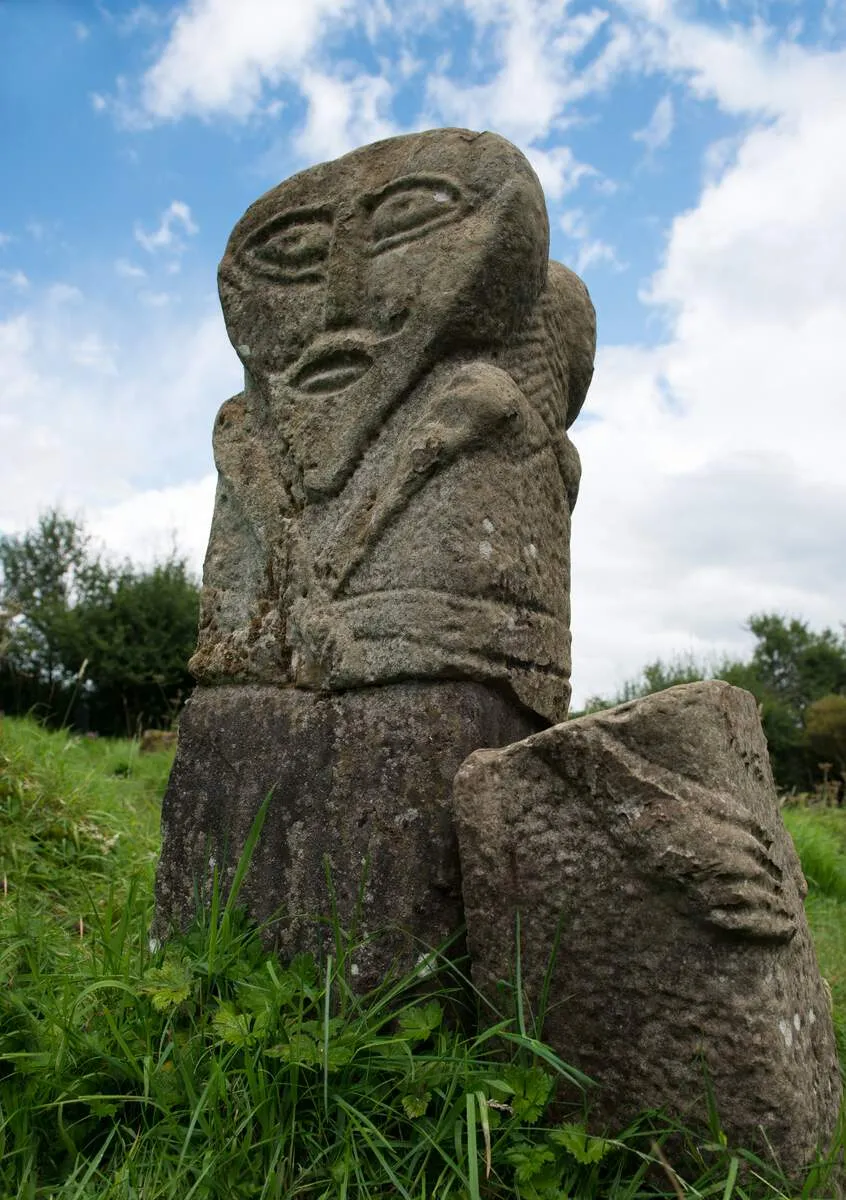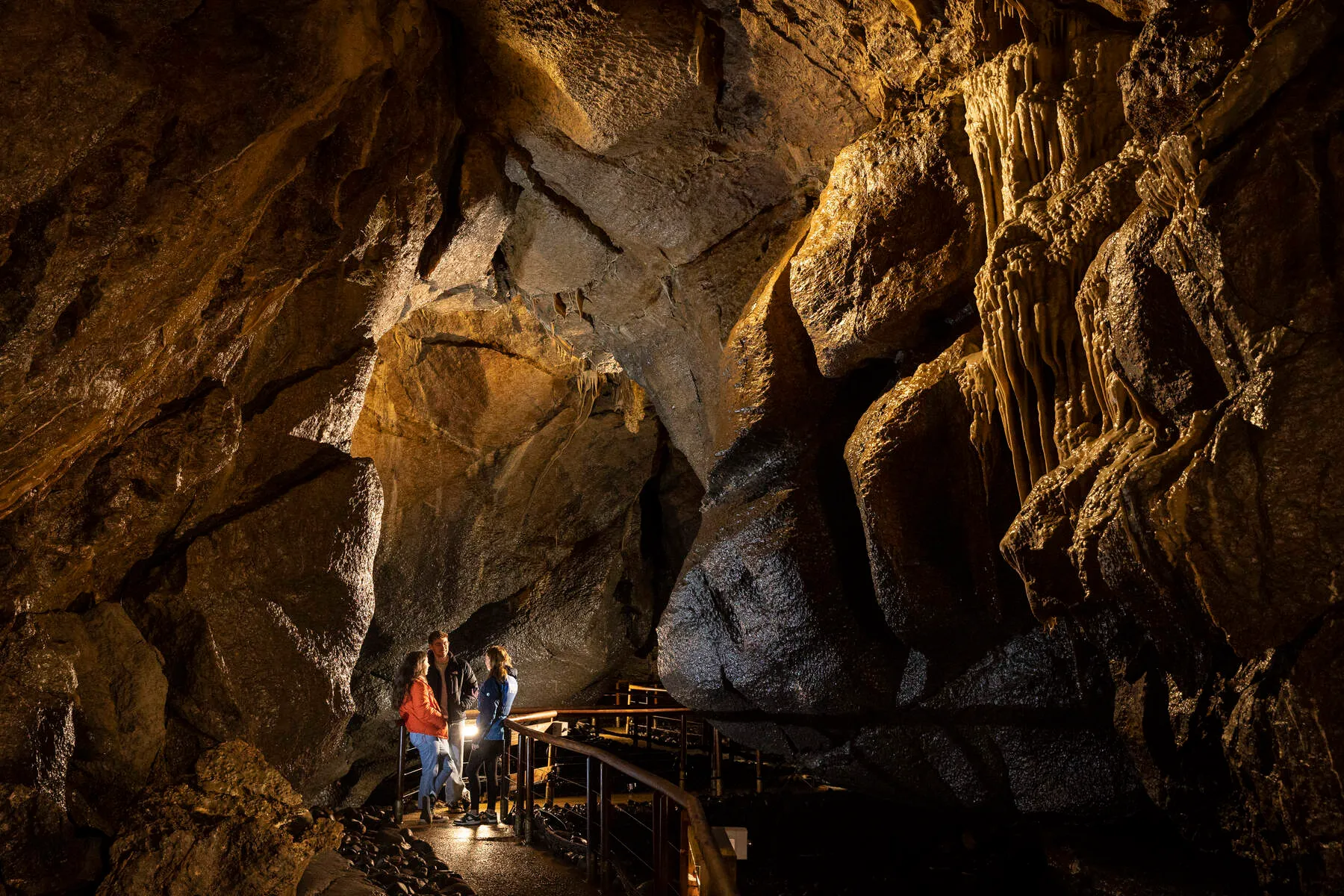Deep beneath the Fermanagh landscape lies the Marble Arch Caves, Northern Ireland's longest known cave system and a highlight of the Marble Arch Caves Global Geopark. Three underground rivers – the Sruh Croppa, Aghinrawn, and Owenbrean – carved out these amazing caves over thousands of years through the limestone rock. It's a classic example of a karst landscape. The rivers actually meet underground and flow out together at Cladagh Glen, Ireland's largest karst resurgence (where an underground river reappears). The caves get their name from a nearby limestone arch that shines like marble when wet, but the real wonders are hidden below ground.
People have been fascinated by these caves for centuries. Reverend William Henry wrote about the rivers and sinkholes back in the 1730s. A major exploration happened in 1895 when French explorer Édouard-Alfred Martel descended, mapping many passages. Over the years, caving groups discovered more chambers, like the huge Great Boulder Chamber, and used dye tracing to figure out how the rivers connect. The caves were carefully developed with paths and lighting and opened to the public in 1985, allowing visitors to see incredible formations like the towering Guardian Angel stalactite or walk the narrow Moses Walk beside rushing water, all while protecting the delicate environment.
Today's guided tour is a fantastic experience. It starts with a calm 10-minute boat trip on the underground Cladagh River, followed by a walk through beautifully lit chambers. You'll see massive stalactites hanging from the ceiling, flowing calcite formations that look like curtains, and the impressive Pool Chamber. The 75-minute tour is manageable for most people, and the guides bring the caves' geology and history to life, even sharing old local tales of fairies and witches! If you want to see more, a virtual reality exhibit lets you explore hidden passages. Outside the caves, the surrounding Cuilcagh Lakelands Geopark offers more adventures, like hiking or visiting the beautiful Cladagh Glen gorge.
Protecting these caves is vital. Formations like the Porridge Pot, a giant calcite flow, grow incredibly slowly – about 1 cm every thousand years! It's a constant balance between welcoming visitors and preserving this fragile underground world. Issues like damage to the bogs above ground and past vandalism show why conservation is so important. Open from April to September (weather dependent), these UNESCO-recognised caves are part of the world's first cross-border Geopark (shared with County Cavan, Ireland). A visit here is a journey into a world where geology, history, and myth meet.
Getting There
By Car
- From Belfast (2 hours): Take the M1 west toward Dungannon. Continue on the A4 toward Enniskillen. Follow signs for Maguiresbridge, then proceed toward Florencecourt. The caves are approximately 30 minutes past Maguiresbridge.
- From Dublin (3-3.5 hours): Travel north on the M1 to Belfast, then continue west on the A4 toward Enniskillen. Follow signage toward Florencecourt.
- From Enniskillen (45 minutes): Head west on the A4 toward Sligo. Turn onto the B46 toward Florencecourt, following signs to the caves.
By Public Transport
- Buses: A seasonal service operates from Enniskillen during the summer (March-September). The Ulsterbus 261 departs several times daily from Enniskillen to Florencecourt, with a stop near the caves.
- From Belfast: Take the Translink Goldline Express 261 to Enniskillen, then transfer to the Ulsterbus 261.
- From Dublin: Use Bus Éireann Expressway 30 to Enniskillen, followed by the Ulsterbus 261.
- Coach Access: Coaches can drop off/pick up directly outside the visitor center.
Local Transport Notes
- Buses and taxis can drop visitors at the entrance. A designated drop-off point is available near the front doors.
- The site is wheelchair-inaccessible, and the tour requires a basic fitness level with 154 steps and uneven terrain.
Airport Hubs
The nearest airports are Belfast International Airport (45-minute drive to Enniskillen) and Dublin Airport (2.5-hour drive). Renting a car is recommended for flexibility, as public transport options are limited outside peak seasons.
The caves are closed from October to March, so plan visits between April and September. Check schedules in advance, as tours are timed and require arrival 30 minutes prior.
Parking
On-Site Parking
Free parking is available at the Marble Arch Caves Visitor Centre, featuring designated spaces for cars and coaches. The car park is open during operational hours (typically 9:00 AM-5:00 PM, but check for seasonal adjustments-e.g., 10:00 AM-4:00 PM during some periods). Outside these hours, the car park is locked. A drop-off point is provided near the entrance for quick access.
Accessibility
Five Blue Badge-designated disabled parking spaces are located close to the Visitor Centre entrance, ensuring easy access for all visitors.
Coach Parking
Coaches may use designated bays located to the left of the main car park upon arrival. Parking here is free but restricted to marked areas to avoid obstructing the Visitor Centre frontage.
Alternative Parking Options
- Cuilcagh Boardwalk Trail:
- Paid Option: A private car park requires pre-booking and accepts payment via debit/credit card (excluding American Express).
- Free Option: The Killykeegan Nature Reserve car park (open 10:00 AM-4:00 PM daily) offers free parking but is farther from the trailhead.
- Cladagh Glen Walk:
- The Cladagh Glen Car Park (free, year-round) holds up to 10 vehicles and is located along the Florencecourt to Blacklion Road. It includes a 1-meter stone stile at the trail start.
Peak Times & Alternatives
During busy periods, the main Visitor Centre car park may fill quickly. Consider using the Killykeegan or Cladagh Glen car parks as alternatives. A summer-only bus service from Enniskillen provides an eco-friendly option to avoid driving altogether.
Distance to Entrance
The Visitor Centre car park is within a short, 50-meter walk of the attraction entrance.
Always verify operational hours and parking availability before visiting, especially for seasonal adjustments or special events.
Pricing
Family tickets offer a great value starting from £39.00 (approx. €44.30), providing access to the standard guided Owenbrean River Walking Tour. This tour includes a knowledgeable guide, cave exploration, and entry to the visitor centre.
Family & Group Considerations:
- Family tickets are the primary discounted option available.
- Groups may wish to book in advance, as tours fill quickly, but no group-specific discounts are explicitly mentioned.
Guided Tours & Upgrades:
- The Owenbrean Tour (standard walking cave tour) is included in ticket prices.
- The Martel Tour, a more adventurous option requiring crawling and wading for fit adults, is noted as an "upgrade" but exact pricing is not provided.
Additional Notes:
- Accessibility: Wheelchair-friendly tours are available.
- Children's Policy: Under-16s must be accompanied by an adult.
- Season Passes/Combo Tickets: None are mentioned in the sources.
- Free Days/Special Rates: No details are provided.
- Payment Methods: Not specified; visitors should consult the official website for booking instructions.
Marble Arch Caves Promo Code & Special Offers
- Promotional Offers:
- 15% off guided cave tours in February-March (Mon-Fri) using code HWS15 (try this code).
- Combined ticket with Cladagh Glen Waterfall saves 15% when purchased together.
-
Seasonal gift shop discount (20% off items during one month annually).
-
Discount Codes:
-
Code HWS15: Apply at checkout for February-March cave tours (may not be guaranteed).
-
Group Discounts:
-
10+ people receive 10% off all ticket types.
-
Membership Benefits:
-
National Trust members qualify for free entry.
-
Package Deals:
- 15% savings with Cladagh Glen Waterfall combined ticket.
Nearby Attractions

Devenish Island
Sitting peacefully in Lower Lough Erne, Devenish Island is one of Ireland's most important and best-preserved early Christian sites. It was founded back in the 6th century by St. Molaise, a figure sur...
Distance: 7.3 km

Castle Coole Estate
Castle Coole is a stunning example of 18th-century neo-classical style, located in the rolling Fermanagh countryside in Northern Ireland. Built for the first Earl of Belmore and finished in 1798, arch...
Distance: 13.4 km

Boa Island Janus Stones
Tucked away in the quiet Caldragh Cemetery on Boa Island (the largest island in Lower Lough Erne), you'll find the fascinating Boa Island Janus Stones. The most famous is the double-sided 'Janus figur...
Distance: 23.0 km
